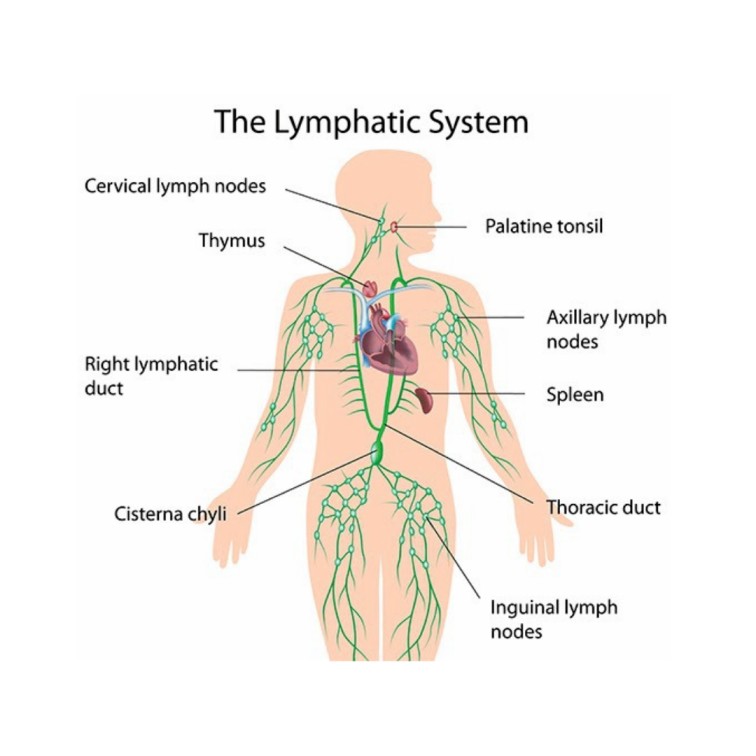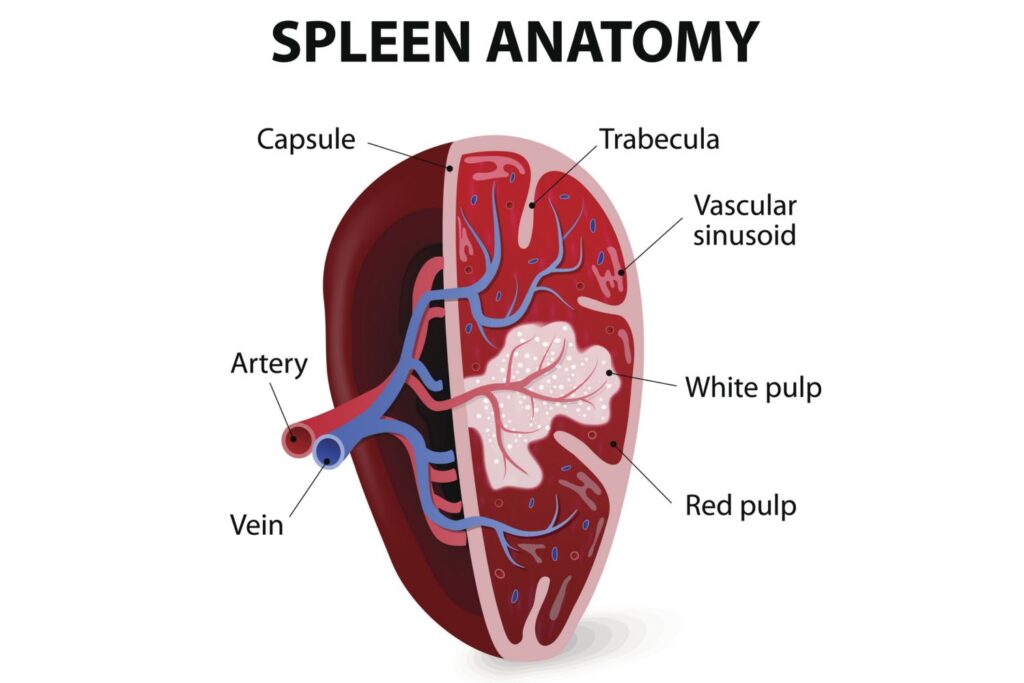Table of Contents
ToggleANATOMY AND PHYSIOLOGY OF LYMPHATIC SYSTEM
The lymphatic system is part of the circulatory system which begins with very small close ended vessels called lymphatic capillaries which is in contact with the surrounding tissues and interstitial fluid. The lymphatic system is almost a parallel system to the blood circulatory
system.
It consist of:
- Lymph
- Lymph vessel
- Lymph nodes
- Diffuse lymphoid tissue
- Bone marrow
Lymph
This is a clear watery fluid which transports plasma proteins, bacteria, fat from ileum and damaged tissues to the lymph nodes for destruction which circulates in lymph vessels.
It has similar composition as plasma and contains lymphocytes and macrophages for defense.
Lymph is an ultra filtrate of blood from capillary ends due to pressure in the blood vessel into the tissue as interstitial fluid totaling approximately 2 liters (1 – 3 % of body weight). Lymph is identical to interstitial fluid
Lymph vessels/Lymphatics
They are similar to blood vessels and its where lymph circulates before it is returned to general blood circulation. They continue from lymph capillaries which originate as blind-ended tube in the interstitial spaces and join lymph nodes, tissues and organs
Lymph capillaries are anatomically similar to blood capillaries i.e. made of a single layer of endothelial cell except there is no basement membrane making them able to allow large molecules like plasma protein that leak into interstitial spaces pass through capillary cells
All body tissues have a network of lymphatic vessels except the brain, spinal cord, bones, conea of the eye and superficial layer of the skin.
Lymph vessles become larger as they join together eventually forming two large ducts that is;
- Thoracic duct from cistern chyli in front of L1 & L2 draining lymph from legs, pelvis, abdomen, left of the chest, neck and left arm into the left subclavian vein in root of the neck
- Right lymphatic duct in the root of the neck draining lymph from right chest, head, neck and right arm into right subclavian vein

Lymph circulation
The lymphatic system represents an accessory route through which fluid can flow from the interstitial spaces into the blood. The lymphatic’s can carry proteins and large particulate matter away from the tissue spaces.
This returns proteins to blood from the interstitial spaces and is an essential function, without this death occurs within about 24 hours.
Lymph flow is aided by;
- Contraction of surrounding skeletal muscles
- Movement of the parts of the body
- Pulsations of arteries adjacent to the lymphatic
- Compression of the tissues by objects outside the body
- Rhythmic contraction of lymph large vessels
The lymphatic pump becomes very active during exercise, often increasing lymph flow. Conversely, during periods of rest, lymph flow is sluggish, almost zero.
Lymph nodes
These are oval bean-shaped organs that lie along the lymph vessel. Four or five afferent lymph can vessel enters one lymph node but leave through one vessel. Lymph passes to around 8 nodes before it returns to blood circulation
Lymph nodes consist of lymph tissue which is parked with lymphocytes and macrophages & reticular tissue that produce a network of fibers which provide internal structure with in the node
Large Lymph nodes are located in strategic positions in the body throughout the body arranged in deep and superficial groups’ i.e.
- Cervical Lymph nodes drain lymph from the head and neck
- Axillary Lymph nodes drain lymph from the upper limbs
- Hillar nodes, aortic nodes, sternal nodes drain lymph from thoracic organs and tissues
- Popliteal nodes and Inguinal nodes drain lymph from lower limbs
- Cistern chyli drain lymph from the abdominal and pelvic cavities

Lymphoid Tissue
This includes lymph glands called lymph nodes i.e. pharyngeal tonsils (adenoids) near the posterior nares, palatine tonsils at the back of the mouth and lingual tonsils at the back and sides of the tongue, aggregated lymphoid follicles (peyer’s patches) in the small intestines
Lymphoid tissue is found in the bone marrow, spleen, liver, lungs and thymus gland
Spleen
This is the largest lymph organ located in the left hypochondriac region of the abdominal cavity between fundus of the stomach and diaphragm
The spleen has two roles i.e.
- site of old blood cell destruction
- monitoring body immune system
The spleen filters blood

Bone Marrow
This acts as a site of
- B-cell and T-cell generation.
- It also produces monocyte, granulocytes, RBCs and platelets.
The B-cells mature in the bone marrow. The bone marrow is responsible for generating stem cells where all blood cells arise
Thymus Gland
This is a grayish organ located in the chest between lungs just below the neck
It has two lobes each with outer cortex and inner medulla. The medullar contains mature lymphocytes. The cortex receive pre-T cell
In cortex cell recognize certain antigen, those which fail die. The live cell continues to medulla and general circulation. This gland secrets thymosin required for development of T-lymphocytes

Function of lymph
- Transport of proteins and large particles that cannot be absorbed directly into circulation.
- Transport of fatty acids and cholesterol from intestines.
- Return of excess fluid from tissues into circulation.
- Carry bacteria into nearest lymph node where they can be destroyed.
- Carry antibodies
- Transport vitamin K from intestine to blood stream

